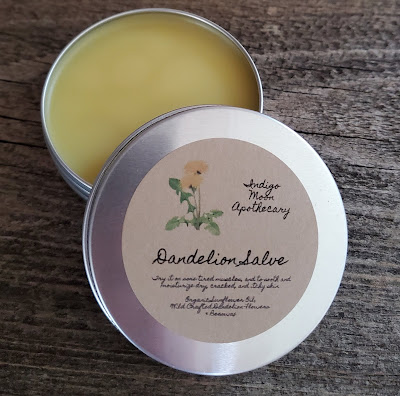Dandelion
Dandelion Taraxacum officinale aka bitterwort, blow-ball, cankerwort, clockflower, common dandelion, Irish daisy, lion's tooth, priest's crown, puffball, swine's snout, telltime, yellow gowan. She shows up like clockwork every year causing lawn lovers to go to war with her. I on the other hand look forward to her as the first fresh food of the year for the bees, for those that don’t know most beekeepers have to feed their bees sugar water to keep them over winter. I always let her be in favor of the wild things that can depend on her. Now living in the high desert mountains I have to cultivate her. Imagine that! The version of her that I grow is a French dandelion, just a bit bigger than the wild one. I use the young leaves in salads, steam them, stir-fry them, the flowers are edible too you can pluck the petals and sprinkle on cupcakes and muffins. They make tasty fritters too! They can be used to make tea. Even the root can be roasted for a coffee substitute. You can also make a lovely wine with dandelions which I have not done yet but it’s definitely on the list. My chickens love dandelions!
Medicinally dandelion is a well known digestive herb, (she is a bitter) a few drops of dandelion root tincture taken before meals can prevent gas or after meals for heartburn. It’s also known as a cleansing herb, that supports healthy liver and kidney function. That same cleansing action is a blood purifier that can help reduce blood cholesterol. I keep dandelion fresh whole plant tincture on hand in the winter for UTI’s when my supply of fresh parsley (my go to for UTI’s) is just a memory. The dosage for the fresh whole plant tincture for this purposes is 10-15 drops sublingual or in a bit of juice or water.
Dandelion flowers have pain relieving and anti-inflammatory properties, I make a salve every year when the flowers are abundant, it’s wonderful for sore and tired muscles and joints as well as soothing and moisturizing itchy, dry cracked skin.






Comments
Post a Comment